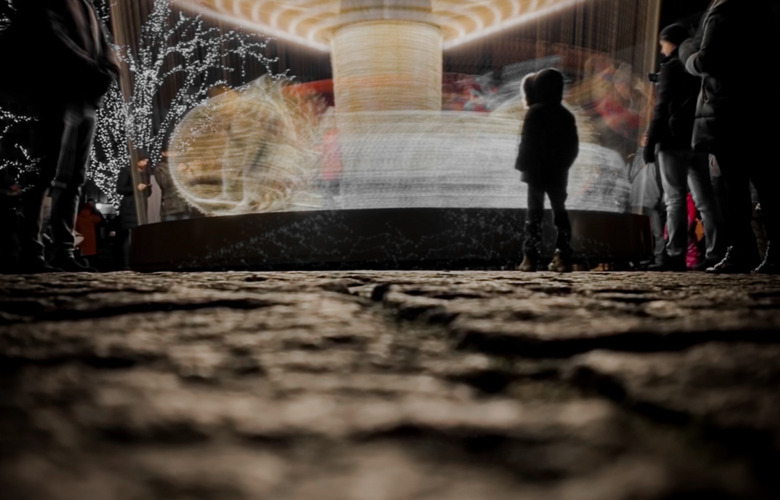
Tadeusz Kantor was an incredible multi-talent: stage director, creator of happenings, painter, set designer, writer, art theoretician, actor in his own productions, and lecturer at the Academy of Fine Arts in Krakow. Kantor is renowned for his revolutionary theatrical performances in Poland and abroad. He was one of the great influences for the diverse and liberal world of theatre we know today.
Tadeusz Kantor was born in 1915 in Wielopole Skrzyńskie. He died in 1990 in Krakow.
Between 1934 and 1939, Kantor studied at the Academy of Fine Arts in Krakow. His mentor was Karol Frycz, a set designer who did brilliant work in the period between the two world wars.
He was inspired by Constructivism, Dada, Informel Theatre, and Surrealism.
During the German occupation, Kantor founded the experimental Underground Independent Theatre, where he staged secret productions in private homes. Like Jean Cocteau’s Orpheus, Juliusz Slowacki’s Balladyna, and Stanislaw Wyspianski’s The Return of Odysseus.
His friends from art school helped Kantor to set up and perform each of these plays many times in Krakow apartments.
Later in life, Kantor often emphasized how much these war time productions had been the origin of his art.
In 1945, he joined Mieczyslaw Porebski in publishing a manifesto on “exponential realism” in the arts. In it, Kantor encouraged artists to take risks in the name of creative freedom.
He himself followed these guidelines only a few years after writing these words by vanishing from cultural life throughout the Socialist Realist period.
After the 2nd World War, Kantor worked as a set designer, mostly for the Helena Modrzejewska Old Theatre in Krakow. Over the years he primarily worked on abstract sets. He also worked on his paintings which he exhibited for the first time in 1955.
It was in that year as well that Kantor created the Cricot 2 Theatre which became an incubator for his creativity.
He began to work on productions that included many elements that were to become characteristic of his theatrical style, such as sets that suggest silent films, and actors who move and act like mannequins.
In Cricot 2’s second production, Kantor used black bags which he wrapped around the actors.
He wanted to strip the characters in his play of any recognizable form, to turn them into anonymous and symbolic shapes rather than people.
From 1960 to 1962 Tadeusz Kantor became involved in Informel Theatre. This was a sort of automated spectacle that relied entirely on coincidence and the movement of matter. The actors were treated like objects and stripped entirely of their individuality.
But Kantor wasn’t entirely happy with the concept of Informel Theatre. He wanted to go a step further in improvisation. He wanted to push the known boundaries even more.
So he created “Zero Theatre” which was completely devoid of any action or events.
He experimented with this performance art form from 1962 to 1964.
Then, in 1965 Kantor created Poland’s first happenings, Cricotage and Linia Podzialu (Dividing Line), which were later followed by others.
After a while, however, Kantor realized that happenings as a creative medium could not entirely satisfy his thirst for creation. He found his way back to theatre, and in 1972 staged Nadobnisie i Koczkodany (Dainty Shapes and Hairy Apes), based on a play by Witkiewicz, in which elements of happenings were absorbed into a theatrical structure.
In 1975, Kantor moved into another phase of his creative evolution and founded the “Theatre of Death”.
It is in this phase that Kantor created what are considered to be his most outstanding and well-known works.
One of them was, for example, Niech Sczezna Artysci (Let the Artists Vanish) in 1985.
Kantor often participated directly in his productions and acted as a master of ceremonies. He observed the action attentively and intervened when necessary. You might say he was rather obsessive. Even the slightest nuances of his productions held major importance for what he wanted to express.
Yet, it is precisely this extreme integrity towards his vision which led to many of Tadeusz Kantor’s productions being inscribed in the annals of theatrical history.
His exceptional creations brought Tadeusz Kantor widespread recognition and transformed him into the godfather of a style of theatre that combines the visual perception of form with the need to convey a deep, personal, emotional message.
Carrying on Kantor’s legacy, Cricot 2 Theatre centers have been created in Krakow and Florence. In addition to studying Kantor’s theatre, the center in Italy also documents the artist’s other creative activities and examines the reception and perception of his work.
Sources for this article:
Google Arts and Culture – Tadeusz Kantor
Tadeusz Kantor Foundation, Poland
Culture Poland, Tadeusz Kantor
Cricoteka – About Tadeusz Kantor
Khalil Oghab, the Father of Iranian Circus
The Importance of Kindness in Entertainment


Liam Klenk was born in Central Europe and has since lived on four continents. Liam has always been engaged in creative pursuits, ranging from photography and graphic design, to writing short stories and poetry, to working in theatre and shows. In 2016, Liam published his first book and memoir, 'Paralian'.
Read Full Profile© 2021 TheatreArtLife. All rights reserved.

Thank you so much for reading, but you have now reached your free article limit for this month.
Our contributors are currently writing more articles for you to enjoy.
To keep reading, all you have to do is become a subscriber and then you can read unlimited articles anytime.
Your investment will help us continue to ignite connections across the globe in live entertainment and build this community for industry professionals.